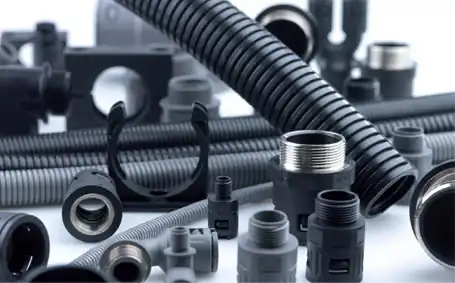The initial decomposition temperature of alkaline magnesium carbonate (BMC) is 220℃, the decomposition temperature range is 220-550℃, and the heat absorbed during the decomposition process is 800kJ/kg, which is divided into inert gas water vapor and carbon dioxide, and the weight loss is 52%. It has good prospects for use as a polymer environmentally friendly flame retardant.

The 6% stearic acid-modified basic magnesium carbonate was added to the polypropylene in different addition amounts, and the influence of the addition amount of basic magnesium carbonate on the mechanical and flame retardant properties of polypropylene was studied. The results show that basic magnesium carbonate can use flame retardant polypropylene as a flame retardant. When the amount of alkaline magnesium carbonate is 60 parts, the oxygen index of the polypropylene composite material reaches 32%, and the UL94 test reaches V0 level. With the increase of the amount of alkaline magnesium carbonate, the mechanical properties of the composite material have decreased significantly. When the amount of alkaline magnesium carbonate added from 55 parts to 60 parts, the tensile strength, bending strength and impact strength of the polypropylene composite material dropped from 20.51MPa, 28.56MPa, 34.14kJ/m2 to 18.71MPa, 27.57MPa, and 19.87kJ/m2, respectively, of which the impact strength decreases the most significantly. The combustion of alkaline magnesium carbonate polypropylene composite materials is carried out gradually from the outside to the inside. On the surface of the composite material, partially or completely decomposed alkaline magnesium carbonate, and the carbon layer formed by magnesium oxide catalyzed polypropylene carbonation produced by decomposition of alkaline magnesium carbonate can block the exchange of oxygen and heat and enhance the flame retardant effect.
The improvement of the flame retardant performance of composite materials is mainly manifested in increasing the thermal decomposition temperature of alkaline magnesium carbonate, so that the heat absorption range of the flame retardant falls as much as possible to the thermal decomposition temperature range of the polypropylene, thereby enhancing the flame retardant effect. Different synergists can affect the color of the composite. By combining different synergistic agents, the color, mechanical and flame retardant properties of the composite material can be further adjusted to meet different usage requirements. If only 55 parts of alkaline magnesium carbonate are added as the flame retardant, the tensile strength of the composite material is 21.03MPa, 29.89MPa, 39.58kJ/m² (SHM2), the oxygen index is 28%, which does not reach the vertical combustion level, and the product color is earthy yellow. When 35 parts of alkaline magnesium carbonate were used, the tensile strength, bending strength and impact strength of the composite were 24.53MPa, 39.75MPa, and 11.78kJ/m (HMCOM4), respectively, the oxygen index was 27%, the vertical combustion reached V2 level, and the product was white in color.
